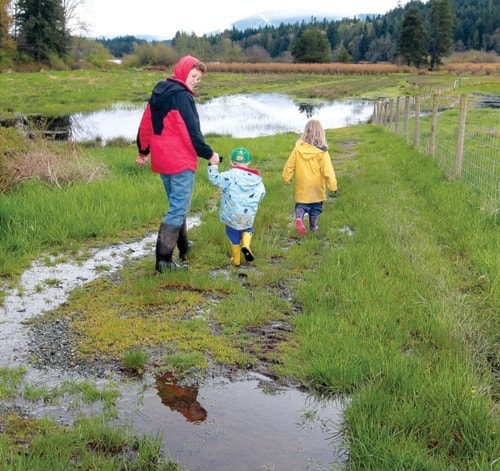Low-income Canadians could be feeling the pinch at the grocery store due to dramatic food price increases.
The Food and Agriculture Organization of the United Nations has indicated a developing food crisis, which started as early as 2007. It has been influenced by natural disasters, market volatility and the financial crisis. Climate change is also expected to impact food production and have an impact on food security in developing countries.
Raimo Martella, chairman of Vancouver Island University’s economics department, said developing countries will feel the food crisis most. People in those countries typically spend 80 to 90 per cent of their income on food, he said, while most Canadians spend about 15 per cent.
However, he said it will hit low income earners in Canada the hardest.
“For people with limited income it will be a crisis for them,” he said.
In mid-2008, food prices skyrocketed and reached a 30-year peak. Those peak prices were then surpassed in December 2010. This March, prices dropped for the first time in eight months, but according to the Food and Agriculture Organization, it’s uncertain whether prices will stabilize or continue to rise.
Martella said food prices are increasing between one to two per cent but difficulties will arise if it goes over five per cent.
Rising oil prices are also affecting costs.
“Oil is one of the ingredients that effects everything we do,” said Martella. “In the distribution of food, the oil companies are a monopoly force and will charge what the market will bear.”
Last year was also a bad year for global crops.
A drought in Russia devastated wheat crops and led to the Russian Federation banning wheat exports. Wheat prices increased up to 80 per cent from July to September 2010, according to the FOA, and floods in Australia also affected crop yields.
In Nanaimo, the growing season is off to a slow start.
It has Yellow Point farmer Erica DeFrane, who owns Steld Farm, watching the weather daily and hoping for change.
Her fields remain submersed in water. Cold and wet weather has meant they haven’t dried out and if conditions don’t change within the next few weeks she might not plant her barley and oat crop this year.
If there is a long summer season, the crops would be fine, but if cold weather strikes in late September and October, it could ruin the harvest.
“The ground is so wet it will affect the potato vegetable farmers,” she said. “We are at least a couple of weeks behind.”
The late blooming this season is a phenomenon that Bill Merilees, who has kept phenology records (the study of animal and plant life cycles) for about 300 plants the past 15 years in Nanaimo, has observed.
Merilees said the blooming season for many plants is about a week behind.
“It might be a little slower in getting started or a shorter season,” he said.
But a few weeks of good weather could put the season back on track, Merilees added. The beginning of the season is subject to high variability – a few days of warm weather and the growing process will speed up.
“Early in the season it becomes very variable. As the season goes on it diminishes,” he said.
Martella said it’s difficult for an urban dweller to do much about rising costs, but Crystal Dennison, executive director for Nanaimo Foodshare Society, said rising prices reinforce the need to shift priorities and focus on local food security.
“We are going to see a continuation of people that are food-insecure,” she said.
Programs such as the society’s Good Food Box, which is a partnership with local farmers to provide low-income earners with fresh produce every month, and the gleaning program, are important for food security.
Dennison said the society is working with the Vancouver Island Health Authority on a regional effort that began in 2008 that includes three regional hubs to increase Island food security.
VIHA has invested $620,000 in the program.
The hope is to support community-driven urban agriculture, farmers, native seed collection, community gardens and other projects.
The organizations expect to meet with VIHA to discuss the initiative sometime this summer.
